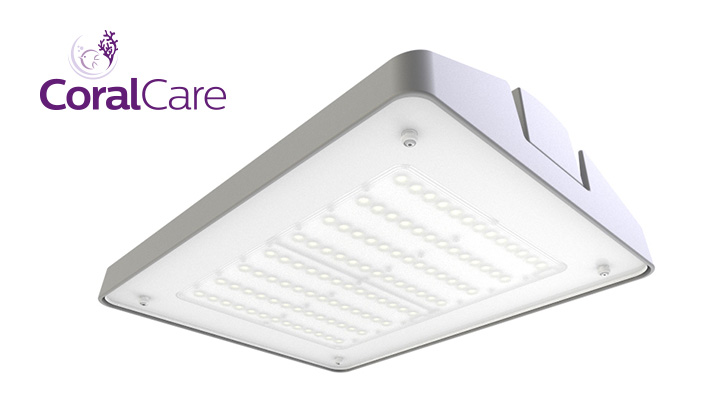The Philips CoralCare LED is a brand new aquarium light which is exciting for being made by the global brand, Philips. Whether it’s TVs, microwaves, or electric shavers, the Philips brand is a trusted logo for all manner of household appliances, and now we can look forward to the CoralCare LED aquarium light.
We don’t presently know too much about the Philips CoralCare LED except that it is being marketed in the U.K. first. There’s no reason to believe the CoralCare LED won’t reach a global distribution if this light is as good as Philips could make it. Besides being the first such offering from a global consumer electronics manufacturer.
Philips is not a newcomer to the LED lighting arena, having developed its own complete line of Light Emitting Diodes with the Lumileds and Luxeon brands, and more recently with the Philips Hue color-changing and controllable home LED lighting. The Philips Hue LED light has become one of the most popular and well-established solid state lighting products for home use to feature wireless, app-controlled functionality, all of which we can only hope will be ported over to the Philips CoralCare LED aquarium light.

Details on the new CoralCare LED are scant but we do know that it will be passively cooled and the marketing seems to be targeting the reef aquarium side of the hobby specifically. The passively cooled design of the CoralCare LED indicates that the fixture will likely be made with a substantial amount of aluminum for thermal cooling, and we can see that the numerous and evenly spaced out LEDs ought to produce a very uniform light field.
This is not the first foray into aquarium products for Philips, they’ve been making fluorescent lamps for general aquarium use for years and the Aquarium Water Purifier was a small ozonizer for keeping water nice and clean. We have high expectations for the Philips CoralCare LED light but we can only wait until the new year when hopefully more details will be revealed about the specifications of color, power and controllability options. [Philips]



